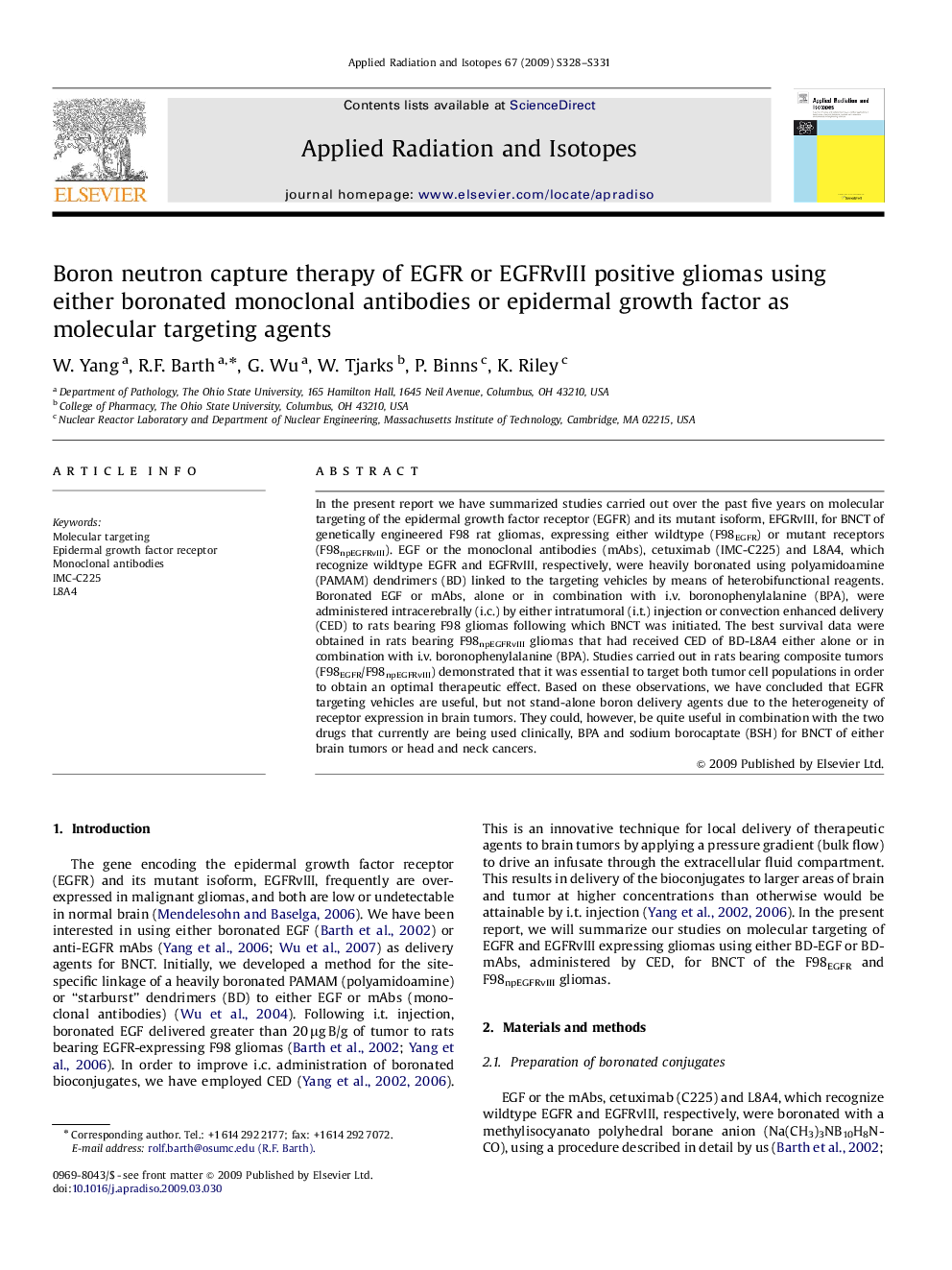| Article ID | Journal | Published Year | Pages | File Type |
|---|---|---|---|---|
| 1876959 | Applied Radiation and Isotopes | 2009 | 4 Pages |
In the present report we have summarized studies carried out over the past five years on molecular targeting of the epidermal growth factor receptor (EGFR) and its mutant isoform, EFGRvIII, for BNCT of genetically engineered F98 rat gliomas, expressing either wildtype (F98EGFR) or mutant receptors (F98npEGFRvIII). EGF or the monoclonal antibodies (mAbs), cetuximab (IMC-C225) and L8A4, which recognize wildtype EGFR and EGFRvIII, respectively, were heavily boronated using polyamidoamine (PAMAM) dendrimers (BD) linked to the targeting vehicles by means of heterobifunctional reagents. Boronated EGF or mAbs, alone or in combination with i.v. boronophenylalanine (BPA), were administered intracerebrally (i.c.) by either intratumoral (i.t.) injection or convection enhanced delivery (CED) to rats bearing F98 gliomas following which BNCT was initiated. The best survival data were obtained in rats bearing F98npEGFRvIII gliomas that had received CED of BD-L8A4 either alone or in combination with i.v. boronophenylalanine (BPA). Studies carried out in rats bearing composite tumors (F98EGFR/F98npEGFRvIII) demonstrated that it was essential to target both tumor cell populations in order to obtain an optimal therapeutic effect. Based on these observations, we have concluded that EGFR targeting vehicles are useful, but not stand-alone boron delivery agents due to the heterogeneity of receptor expression in brain tumors. They could, however, be quite useful in combination with the two drugs that currently are being used clinically, BPA and sodium borocaptate (BSH) for BNCT of either brain tumors or head and neck cancers.
